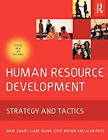|
The Trainers HandbookChapter 5 - Evaluating Your EffectivenessSelf-Evaluation. So far, weve talked about the evaluation of trainees. You, too, need to know how you are doing. Bring a video camera to your classes and record an hour here and there at random. Do it several times, then watch the tapes and ask yourself if you could learn from that trainer. If so, why? If not, why not? If you dont have a video camera, bring in an audiotape recorder. The trainees wont mind, and the experience is invaluable. Invite someone whose judgment you respect to observe and critique you. Give that person a list of attributes to evaluate. Ask your trainees to fill out evaluation forms during or at the completion of their training. Follow their advice. You cant please all of them, so dont try, but look for patterns in negative comments and change in response to them. Enjoy the positive comments, but seriously weigh the negative ones. Ask questions like, Was the material too theoretical? Just right? Too practical or too elementary? What did you feel you learned? Have them rate you or the seminar on a scale of 1 to 5, where 1 is poor and 5 is excellent, or just use categories of excellent, very good, good, fair, and poor. One of the problems with standardized evaluation forms is that they are expected to be ideal for all occasions. They cannot be. Consider designing the evaluation form for the specific class it is to be used in. Such forms are also a good opportunity to gather data on other areas that may require training. Ask trainees what else they feel a need for on their jobs. Finally, be sure to stick to the topic and keep the form simple. Allow enough time at the end of the session for the trainees to fill out the form if you expect them to give it some serious thought. When you want to change your own pattern of teaching, set goals for yourself with set time limits. Dont be locked into certain methods. Try different things and see how the group responds. Go with a good response. If you have to break a bad habit, like saying okay at the end of each thought, try these: 1. Create a mnemonic device to remind yourself you are breaking a habit. It can be putting something unusual in your pocket (my favorite is a pegboard hook), wearing a watch upside down, tying a string on your finger, putting a sign in the back of the room. Use anything that will remind you not to do the habit. 2. Invent a new behavior to replace the old one. 3. Every time you notice your mnemonic device, immediately stop doing the old habit for five minutes and do the new habit. Increase to ten minutes, then twenty, then forty-five minutes, and so on. 4. If all else fails, ask your trainees to help. Explain that you are trying to break a bad habit and show them what it is. Ask them to make a loud noise whenever you do it. I have used this with great success to break several bad habits. (I ask them to give me a Bronx cheer.) Evaluation of Affective Learning. So far the discussion has focused on evaluating cognitive learning. It is relatively easy to tell when people improve their performance of a job. It is more difficult to ascertain whether you have influenced someones attitude. The key, again, is finding a variable that changes with attitude change. By monitoring this variable you can gauge the change in attitude as well. Here are some variables that indicate attitude change:
Excerpts from Chapter 5, The Trainer's Handbook
© 1998, 1993, 1987 AMACOM, a division of American Management Association, New York. All rights reserved. Published by AMACOM Books http://www.amacombooks.org Division of American Management Association 1601 Broadway, New York, NY 10019 Customer Service: 1-800-262-9699 More learning articles: |
|
|
|
|
|
|
|
|
|
|
|
| Copyright © 2000-2006 Alan Price and BestBooks.biz contributors. All rights reserved. |


